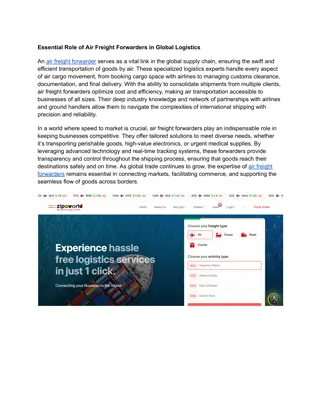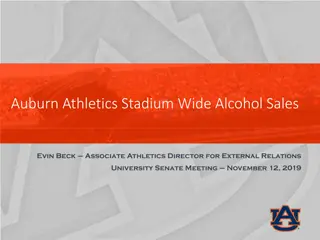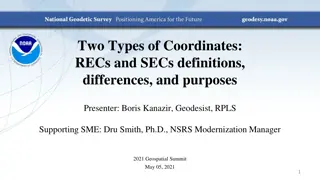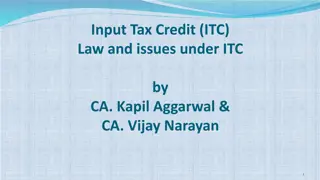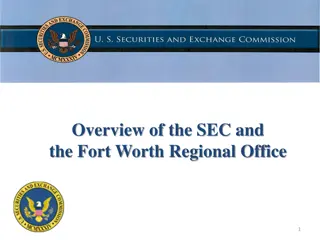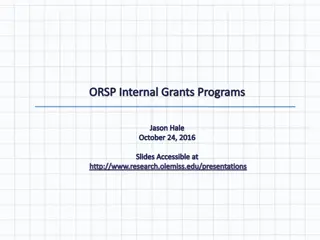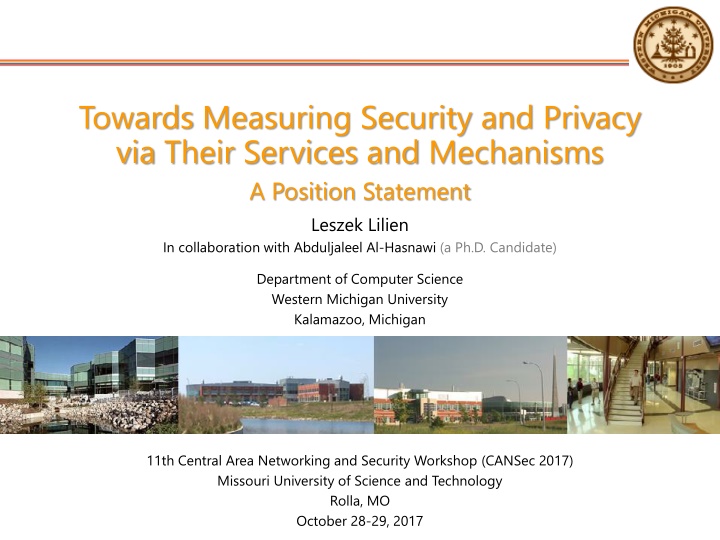
Relationship Between Security and Privacy Metrics
Explore the differentiation between security and privacy, discuss basic measurement principles, and discover challenges in defining metrics. Learn how to implement security and privacy services with appropriate mechanisms and gain insights into comprehensive security and privacy metrics.
Download Presentation

Please find below an Image/Link to download the presentation.
The content on the website is provided AS IS for your information and personal use only. It may not be sold, licensed, or shared on other websites without obtaining consent from the author. If you encounter any issues during the download, it is possible that the publisher has removed the file from their server.
You are allowed to download the files provided on this website for personal or commercial use, subject to the condition that they are used lawfully. All files are the property of their respective owners.
The content on the website is provided AS IS for your information and personal use only. It may not be sold, licensed, or shared on other websites without obtaining consent from the author.
E N D
Presentation Transcript
Towards Measuring Security and Privacy via Their Services and Mechanisms A Position Statement Leszek Lilien In collaboration with Abduljaleel Al-Hasnawi (a Ph.D. Candidate) Department of Computer Science Western Michigan University Kalamazoo, Michigan 11th Central Area Networking and Security Workshop (CANSec 2017) Missouri University of Science and Technology Rolla, MO October 28-29, 2017
Outline 1. Differentiating Security from Privacy 2. Defining Security and Privacy (S&P) for Use in S&P Metrics 3. Basic Measurement Principles 4. Challenges in Defining S&P Metrics 5. Implementing Security Services with Security Mechanisms 6. Implementing Privacy Services with Privacy Mechanisms 7. Partial and Comprehesive S&P Metrics 8. Summary and Conclusions Selected Bibliography 2
Simple Definitions of Security and Privacy [Al-Hasnawi, Al-Gburi & Lilien, 2017] (Computer) security The right not to have one s activities adversely affected via tampering with one s objects (Information) privacy The right to have information about oneself let alone 4 4
Differentiating Security from Privacy [Al-Hasnawi, Al-Gburi & Lilien, 2017] Differentiating security from privacy Provides a proper focus for considering threats Facilitates search for controls Categories of security and privacy issues 1) Pure security issues 2) Pure privacy issues 3) Intertwined security and privacy issues 5 5
Lesson Learned from Differentiating Security From Privacy [Al-Hasnawi, Al-Gburi & Lilien, 2017] Lesson learned from differentiating security from privacy Security and privacy can be differentiated In contrast to a common approach of mixing them up Need to remember about intertwined security and privacy: Many security issues include some privacy aspects Many privacy issues include some security aspects Differentiating security from privacy is beneficial Allows for a better classification of threats and controls Controls a.k.a. countermeasures a.k.a solutions In the area of Computer Security and Privacy Example: Security and privacy classifications based on the four-layer Internet of Thing Reference Model A classification of security threats and controls A classification of privacy threats and controls [Future work]: A classification of intertwined security and privacy threats and controls 6 6
2. Defining Security and Privacy (S&P) for Use in S&P Metrics Objectives 1) Define security and privacy in a way making the definitions useful for defining metrics 2) Propose S&P metrics based on the S&P definitions 7
Problems with Defining Security What is security? Even experts make childish mistakes Springer book chapter [ed. Daimi+, 2018] confuses: secure = intersection of C-I-A with security = union of C-I-A What kind of security do we want to measure? At the operational level [System-centric] security Provided for a computing system or software A property of a computing system or software Our approach: User-centric security Provided to or assured for (human or artificial) users of a computing system System security is secondary, only the means towards the end cf. [Zalewski+, 2016] 8
Defining Security Historical growth of the scope of security CIA: Confidentiality, integrity and availability 1973 - The classic CIA triad a.k.a. AIC triad a.k.a. CIA security triad Components defined in 1973 by James P. Anderson Who coined the term CIA triad remains a mystery [Can anybody help?] A: Auditability 1985 - Added by the U.S. DoD AAN: Authentication, access control, and non-repudiation 1995 - Added by ISO (famous for the OSI network ) [Pfleeger+, 2015] [Trusted, 1985] [ISO, 1995] Security Services (SSs): CIA-A-AAN = [ISO/IEC, 1991] = Confidentiality, Integrity, Availability Auditability Authentication, Access Control, Non-repudiation Is this SS set stable? Is this SS set complete? 9
Security As a Set of 7 Security Services (SSs) [ISO/IEC, 1991 except where stated otherwise] Confidentiality the property that information is not made available or disclosed to unauthorized individuals, entities, or processes The ability of a system to ensure that an asset is viewed only by authorized parties Protecting information from unauthorized disclosure [Pfleeger+, 2015] [Al-Hasnawi, Al-Gburi & Lilien, 2017] Integrity the property that data has not been altered or destroyed in an unauthorized manner The ability of a system to ensure that an asset is modified only by authorized parties [Pfleeger+, 2015] Availability the property of being accessible and useable upon demand by an authorized entity The ability of a system to ensure that an asset can be used by any authorized parties. [Pfleeger+, 2015] Auditability the ability of a system to trace all actions related to a given asset Authentication the corroboration that an entity is the one claimed, and the source of data received is as claimed Access Control the prevention of unauthorized use of a resource Including the prevention of use of a resource [by authorized entity] in an unauthorized manner Non-repudiation a.k.a. accountability the prevention of entities denial to be involved in all or part of a communication Note: The reference defined repudiation, which is used to define, as above, non-repudiation 10
Problems with Defining Privacy What is privacy? Often addressed as security and privacy A failure of a scientific approach, IMHO Due to difficulties in separating privacy from security We see a clear distinction between security and privacy What kind of privacy do we want to measure? At the operational level System-centric privacy Provided for a computing system or software A property of a computing system or software Our approach: User-centric privacy Provided to or assured for (human or artificial) users of a computing system System privacy (incl. system information security) is secondary, only the means towards the end (analogy to security) 11
Defining Privacy Item of interest (IOI) Subjects (Sender or Recipient) / Subject identity / Subject location / Other subject attributes Objects Messages Actions Communications Relationships Between subject identity and messages / Between subject identity and actions Between subject location and messages / Between subject location and actions [Pfitzmann & Hansen, 2010] Privacy Services (PSs): CAAUUUN = [Al-Hasnawi & Lilien, 2016] = Confidentiality, Appropriateness, Anonymity, Untraceability, Unlinkability, Unobservability, Notification Note: divided into 3 lines for mnemonic reasons Is this PS set stable? No! (just the first serious attempt) Is this PS set complete? No! (just the first serious attempt) . . . 12 12
Privacy As a Set of 7 Privacy Services (PSs) [Buttyan & Hubaux, 2008; Al-Hasnawi & Lilien, 2016] (The same number of PSs as SSs is a pure coincidence) Confidentiality: protecting information from unauthorized disclosure Appropriateness: collection, processing, and retention of data has to be for legitimate purposes and only as needed Anonymity: preventing identification of an entity (especially of a user) who owns a certain resource or performs a given action Untraceability: preventing an adversary from determining if a given set of actions were performed by the same subject (who might stay anonimopus) guarantee that user credentials are legitimate and correct Unlinkability: preventing an adversary from sufficiently distinguishing whether two or more items of interest (IOIs) are related or not Note: We want anonymity and untraceability to be separate PS Even though they can be viewed as unlinkability subcategories Unobservability: preventing an adversary from sufficiently distinguishing whether a given IOI exists or not Notification: assuring that entities (esp. users) are notified about the individual information collected about them, and asked to give consent for its use [Buttyan & ..., 2008] cf. [Poslad, 2011] 13
Five Property Measurement Elements Critical elements in measurements of any property: 1. Clearly identify the property (the measurand) to be measured Requires building a model of the phenomenon 2. Establish a metric to quantitatively characterize the property (like a meter metric) Ideally, this would be a unit of measurement For vaguely defined properties it can be just a standard (a scale) against which measurements are applied 3. Develop a measure, which would apply the metric to objects under investigation Ideally, this is just a measuring instrument For vaguely defined metrics, it can be a formula or any other mental device used to apply a metric, make comparisons. We require linearity: Any two identical changes in the property value are reflected as two identical changes in the measure 4. Design the measurement process to deliver results Includes calibration of the measuring device Concerned with collection and availability of data 5. Have each measurement result composed of: (i) the value of the measurement; and (ii) the estimate of its accuracy (an error). Alternatively, measurement could be a range of values designating one value as the measured quantity value [Zalewski+, 2016] 15
Two Property Measurement Elements Considered Here We cover here only 2 of the 5 property measurement elements: 1. Clearly identify the property (the measurand) to be measured Requires building a model of the phenomenon 2. Establish a metric to quantitatively characterize the property Ideally, this would be a unit of measurement For vaguely defined properties it can be just a standard (a scale) against which measurements are applied. 16
Problems With Security Metrics Problems with security metrics Vagueness of the concept of security Vast majority of metrics are at the management level Not measurement in a scientific sense As developed in measurement theory cf. [Zalewski, 2016] Question: Can security be correctly represented with quantitative information? Findings: There exists significant work for quantified security Little solid evidence that the known methods represent security in operational settings [Verendel, 2009] Need more, diverse security metrics proposals This is one of them 18
Problems With Privacy Metrics Some problems with privacy metrics are even tougher (my claims, by analogy to security) Even larger vagueness of the concept of privacy Vast majority of metrics are at the legal level Privacy Act of 1974 (applies to the executive branch of the Federal government) Children's Online Privacy Protection Act, Gramm Leach Bliley Act (incl. financial privacy) Health Insurance Portability and Accountability Act (HIPAA) ... Not measurement in a scientific sense As developed in measurement theory Open question (by analogy to security): Can privacy be correctly represented with quantitative information? 19
Historical Perspective and Analogy This S&P metric proposal is YAP (yet another poroposal) Analogous to evolution of the meter metric In 1668, the universal measure of length based on a pendulum with a one-second period (later found = 997 mm) ... In 1889, International Prototype Meter: the distance between two lines on a standard bar composed of an alloy of 90% platinum and 10% iridium, measured at the melting point of ice ... In 1983 (till now): Length of the path travelled by light in a vacuum in1 299,792,458of a second [Wikipedia] 315 years of evolution for the meter metric And will not stop here, I presume 20
A Long Way to Go How long are we going to wait for precise S&P metrics? With S&P metrics, we are probably at the pendulum stage 315 years of waiting for a modern solution of 1983 Maybe even longer: Complexity: Length is one-dimensional, S&P are much more complex! Inteligent opponent: Physics studies natural phenomena while we in S&P an intelligent opponent The opponent can act in a way that beats our metrics or measurement process Maybe not so long: Progress of science is much faster now Still, designing a validated metric of security may take years, if not decades [Zalewski+, 2016] 21
Divide and Conquer One of the lessons learned for developing scientifically based security measurements: ... Security is likely to be measured only indirectly, possibly via its inherent components Philosophically, this is the divide-and-conquer principle [Zalewski+, 2016] This is exactly our approach: We propose to measure security/privacy indirectly Via inherent components of security/privacy 22
5. Implementing Security Services with Security Mechanisms 23
Principle of Implementing Security Services with Security Mechanisms Security mechanisms (SMs) Implement SSs in terms of SMs Example Integrity SS: ISS = integrity security service / ISM = integrity security mechanism In general >= 1 ISMs will be used ISS implemented via ISM ISM relies on TIS 1 TIS1 provides interface to Pervasive Trust Foundation (PTF) TIS1 fully supported by PTF (no trust add-on s, patches, etc.) [Lilien+,2010] ISS ISM Application Presentation Non-repudiation Authentication Confidentiality Access Control TIS1 Notarization Session Availability Integrity Transport Network Data Link Physical Pervasive Trust Foundation 24 Note: An older version of the SS set shown.
Security Service Groups and Their Placement within Network Layers [Lilien+,2010], cf. Table 2 [ISO 7498-2] ) Layer Application Presentatio Transport Data Link Network Physical Session Service Group Service [cf. Note 1] Using Security Service Groups (SSGs) instead of SSs Placement of SSGs in OSI network layers n AuthenticationPeer Entity Authentication Data Origin Authentication Access Control Access Control Connection Confidentiality Connectionless Confidentiality Selective Field Confidentiality Traffic Flow Confidentiality Connection Integrity with Recovery Connection Integrity without Recovery Selective Field Connection Integrity Connectionless Integrity Selective Field Connectionless Integrity Non- repudiation Non-repudiation, Delivery Confidentiality Integrity Note 1: SSs in Session Layer add no benefits over SSs provided at higher or lower layers. Note 2: SSs in Presentation Layer are not shown in Table 2 in ISO 7498-2 (p.16) -probably by mistake. Note 3: Availability and notarization SSGs are not considered by ISO-7498-2. Non-repudiation, Origin 25
Selected Security Mechanisms A sample list of SMs (used in the preceding table) 1. Encipherment 2. Digitalsignatures 3. Access control mechanism Uses authenticated entity identity, or information about the entity or its capabilities, in order to determine and enforce the access rights of the entity 4. Data integrity mechanism Integrity of a single data unit/field, and integrity of a stream of data units/fields 5. Authenticationexchange Ensure identity of an entity by means of information exchange 6. Trafficpadding 7. Routingcontrol Avoiding specific networks, links or relays 8. Notarization Registration of data with a trusted third party that allows the latter assurance of the accuracy of data characteristics such as content, origin, time, delivery, ... cf. [ISO, 1989] 26
Selected Security Mechanisms Another sample list of SMs cf. [Hedbom & Martucci, 2008] 1. Cryptography 2. Cryptanalysis 3. Message authentication code and hash-functions 4. Authentication and passwords 5. Public key cryptography and digital signatures 6. IPSec 7. TLS 8. Firewalls 9. Digital Certificates 10. Intrusion Detection Systems [(1)+ (2) = Cryptology] 27
Use of Security Mechanisms by Security Services and Security Service Groups Table is slightly modified and reformatted. [cf. ISO89] Mechanisms Access Control Encipherment Data Integrity Authenticatio Notarization n Exchange Signature Routing Service Group Services Padding Control Digital Traffic Peer Entity Authentication Authenti- cation Data Origin Authentication Access Control Access Control Connection Confidentiality Connectionless Confidentiality Confiden- tiality Selective Field Confidentiality Traffic Flow Confidentiality Connection Integrity with Recovery Connection Integrity without Recovery Integrity Selective Field Connection Integrity Connectionless Integrity Selective Field Connectionless Integrity Non-repudiation, Origin Non- repudiation 28 Non-repudiation, Delivery
6. Implementing Privacy Services with Privacy Mechanisms 29
Selected Privacy Mechanisms A sample list of PMs 1. Authentication 2. Authorization 3. Data masking 4. Data restrictions 5. Pseudonymity 6. Dummy traffic 7. Dining cryptographers A secure multi-party computation of the OR function) 8. MIX networks Hard-to-trace communications via a chain of mixes (proxy servers) [Al-Hasnawi & Lilien, 2016] 30
Use of Privacy Mechanisms by Privacy Services and Privacy Service Groups PSs using sample PMs (from the preceding slide) [Al-Hasnawi & Lilien, 2016] Privacy Services Privacy Mechanisms Authentication Confidentiality Authorization Appropriateness Data Masking Anonymity Data Restriction Untraceability Pseudonymity Unlinkability Dummy Traffic Dining Cryptographer Unobservability MIX networks Notification 31
Borrowing Implementation Principle from Security Services Plus Future Work Principle of implementing privacy services with privacy mechanisms Same as above for security services Privacy service groups and their placement within network layers To be investigated 32
Partial S&P Metrics and Comprehesive S&P Metrics Multi-level partial S&P measures Level 1 S&P measures 7 partial measures One per SS/PS (= one per Level 1 S&P component) Level 2 S&P measures N2 measures One per SM/PM (= one per Level 2 S&P component) ... Level K S&P measures Nk measures One per Level K S&P component 34
Obtaining Comprehesive S&P Metrics from Partial S&P Metrics Approach 1: Do not combine component metrics Express S&P metric as a 7-component S&P vector of metrics Each component is a partial measure for one SS/PS In turn, each vector component is a vector (subvectors) A subvector is a partial measure for one SM/PM .... [Repeat recursively down do level K] Approach 2: Combine component metrics Many ways of combining Notation: SEC/PRIV comprehensive S&P metric SEC(i)/PRIV(i) Level i partial S&P metric SEC = SEC(0), PRIV = PRIV(0) c(i) i-th component size( SEC(i) ) number of components in the SEC(i) vector 35
Examples of Combining Partial into Comprehesive S&P Metrics Examples of combining component metrics the weakest-chain metric SEC = min { c(i) | 0 <= i <= size(SEC) } the additive metric SEC = c(0) + c(1) + ... + c( size(SEC) ) the multiplicative metric SEC = c(0) x c(1) x ... x c( size(SEC) ) the weighted additive metric or the weighted multiplicative metric w(i) weight for the component c(i) SEC = c(0) x w(0) + c(1) x w(1) + ... + c( size(SEC) ) x w( size(SEC) ) SEC = c(0) x w(0) x c(1) x w(1) x ... x c( size(SEC) ) x w( size(SEC) ) Zillions of other ways of combining component metrics 36
Which Metric to Use or Different Strokes for Different Folks No metric can satisfy all possible users Examples below - a running analogy to buying a car Example 1: One component is by far the most important one Analogy: I ll buy the safest car available, ignore all else Use the weakest-chain metric Example 2: Each component is equally important Analogy : Safety, performance, milege, ... of a car are all equally important Use the multiplicative metric Example 3: None of the individual components matters Analogy : The sum of safety, performance, milege, ... is important Some partial metrics can be very low, even 0 (e.g., safety metric = 0 acceptable here) Use the additive metric 37
8. Summary and Conclusions Main Contributions 1. Differentiated security from privacy 2. Introduced security and privacy (S&P) definitions for use in S&P metrics (Reviewed Basic Measurement Principles) 3. Identified challenges in defining S&P metrics 4. Proposed a hierarchy of partial and comprehesive S&P metrics Based on higher-level metrics derived from lower-level metrics Incl. implementing security/privacy services with security/privacy mechanisms Difficult to define metrics for such complex measurands as S&P A lot of effort (investigations, discussions, standards, ...) needed to solidify components - At all levels: Level 1 (services), Level 2 (mechanisms), ..., Level K A lot of effort to propose numerous ways of combining partial metrics into higher-level metrics - Starting with the lowest considered Level K up to Level 0 (the overall sytem metric) - Combinations incl. the weakest-link, the unweighted/weighted multiplicative/additive Different users will have a broad choice of metrics to choose from - Trial-and-error might be the only way to verify/validate a user s metric choice - With the associated cost of trial-and-error 38
Selected References (names of my Ph.D. students underlined) A. Al-Gburi, A.l Al-Hasnawi, and L. Lilien, Differentiating Security from Privacy in Internet of Things A Survey of Selected Threats and Controls, Chapter 9 in: K. Daimi et al., Computer and Network Security Essentials, Springer International Publishing, Cham, Switzerland, 2018. A. Al-Hasnawi and L. Lilien, Privacy Services and Mechanisms, Slides, Department of Computer Science, Western Michigan University, Kalamazoo, M, January 31, 2016 (modified on February 8, 2017) L. Butty n and J.-P. Hubaux, Security and Cooperation in Wireless Networks. Thwarting Malicious and Selfish Behavior in the Age of Ubiquitous Computing. Cambridge University Press, 2008. K. Daimi et al., Computer and Network Security Essentials, Springer International Publishing, Cham, Switzerland, 2018. http://www.springer.com/us/book/9783319584232 ISO/IEC 10745:1995, Information technology -- Open Systems Interconnection -- Upper layers security model. ISO. Accesed online on 25 October 2017 at: https://www.iso.org/obp/ui/#iso:std:iso-iec:10745:ed-1:v1:en ISO/IEC DIS 10181-2, May 1991, Information Technology - Open Systems Interconnection Security Frameworks in Open Systems - Part 2: Authentication Framework. www.iso.org/iso/catalogue_detail.htm?csnumber=14256 L. Lilien, A. Al-Alawneh and L. Ben Othmane, The Pervasive Trust Foundation for Security in Next Generation Networks (A Position Paper), Proc. The New Security Paradigms Workshop Massachusetts, September 21-23, 2010, pp. 129-142. A. Pfitzmann and M. Hansen. "A terminology for talking about privacy by data minimization: Anonymity, unlinkability, undetectability, unobservability, pseudonymity, and identity management," ver. V0.34, Technische Universit t Dresden, Dresden, Germany, August 2010. C. Pfleeger, S. Pfleeger and J. Margulies. Security in Computing. Fifth Edition. Prentice Hall, Upper Saddle River, NJ, 2015. S. Poslad, Ubiquitous Computing: Smart Devices, Environments and Interactions, John Wiley & Sons, 2011. Trusted Computer System Evaluation Criteria. Report DOD5200.28-STD, U.S. Department of Defense, December 1985. J. Zalewski, I. A. Buckley, B. Czejdo, S. Drager, A.J. Kornecki and N. Subramanian, A Framework for Measuring Security as a System Property in Cyberphysical Systems, DOI:10.3390/info7020033 ISO. Used to be online at: http// (NSPW 2010), Concord, Information (Switzerland), vol.7(2), June 2016. 39 39
Thank you very much for your attention! Any questions or comments? 40
The End 41
Other Remarks: Reliability vs. Security Reliability vs. security Reliability: can build a reliable systems from unreliable components Using redundancy, spares, etc. Security: the weakest link determines system security (a common belief) The weakest component a likely target for an intelligent adversary Privacy: the weakest link determines system privacy (my belief) The weakest component a likely target for an intelligent adversary 42
The End 43
The End 44
Definitions of Selected Security Mechanisms Selected definitions and descriptions for security mechanisms Encipherment the cryptographic transformation of data to produce ciphertext Digital signature data appended to, or a cryptographic transformation of, a data unit that allows a recipient of the data unit to prove the source and integrity of the data unit and protect against forgery, e.g., by the recipient Access control these mechanisms use the authenticated identity of an entity, or information about the entity, or capabilities of the entity, in order to determine and enforce the access rights of the entity Data integrity these mechanisms are used to provide the integrity of a single data unit or field, and the integrity of a stream of data units or fields Authentication exchange mechanism intended to ensure the identity of an entity by means of information exchange Traffic padding the generation of spurious instances of communication, spurious data units and/or spurious data within data units Routing control the application of rules during the process of routing so as to chose or avoid specific networks, links or relays Notarization the registration of data with a trusted third party that allows the latter assurance of the accuracy of data characteristics (content, origin, time, delivery, ...) 45
Notification includes this: Other Privacy Services Related to User Rights Transparency The requirement to be open and honest about manner in, and purposes for, which personal data is used Clear and public policies and contracts that define rights, obligations and liabilities of all parties, as well as the activities that may lead to identification, discourage abuse in the first place. Choice An individual s ability to determine whether or how their personal information may be used or disclosed by the entity that collected the information 46







